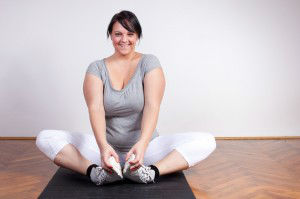
As the weather warms and flowers begin to burst with colorful blooms, spring is the time of year many of us feel the urge to get back outdoors, re-emerging from a long winter spent relatively inactive.
Whether you plan to run, bike, hike, or take part in any type of exercise, it’s important to ease back into physical activity and avoid doing too much too soon, or you might find yourself injured and back on the couch once again.
After a period of even just a few months without regular exercise, your body won’t perform at the level it did prior to stopping. You’re more likely to experience strain and injury; the lungs lose elasticity, making it harder to breathe and sometimes resulting in a side-ache.
Blood volume decreases, which causes the vessels to become smaller and less efficient at pulling oxygen from blood. This requires your heart to work harder, increasing your heart rate.
The director of strength and conditioning at DePaul University’s athletic department says that the number one mistake people make is thinking that they can jump right back into the activities they’re used to doing in the summer.
That’s one of the main reasons for injury, so it’s important to give yourself at least a couple of weeks to ease back into it, see how your body reacts, and then progress from there.
It’s easy to let the excitement of getting back outdoors cloud our judgment of our own abilities, so always keep in mind that you’ll need to start slowly – even if you feel like you’re up to performing at your previous level.
You can return to the same type of activity you did before, just at a lower intensity. For example, if you’re a runner you might start out by walking, or mixing it up by doing intervals of light jogging and walking, and eventually building up to a run.
During the first few weeks, aim to work out three times a week for sessions of 30 to 45 minutes, and lengthen your normal warm-up and cool down to protect muscles and joints from injury.
Pay close attention to body signals. Generally, after four to six weeks you can add more workouts each week and increase the time you spend working out. Another good rule of thumb is that when your routine no longer feels challenging, you’re probably ready to progress.
 Patience is key – it takes time to build yourself back to the level of fitness you were at before you took a break. By resisting the urge to push yourself too much, trusting your body’s signals and stopping when you feel your muscles tiring, you can avoid being forced to take another timeout and having to start all over again.
Patience is key – it takes time to build yourself back to the level of fitness you were at before you took a break. By resisting the urge to push yourself too much, trusting your body’s signals and stopping when you feel your muscles tiring, you can avoid being forced to take another timeout and having to start all over again.
When the cold weather returns this fall and winter, remember that the very best approach is to stay active all year round.
-The Alternative Daily
Sources:
http://www.sportnovascotia.ca/Portals/0/docs/pubs/doctorsns/Apr_08.pdf
http://articles.chicagotribune.com/2012-01-25/health/ct-x-0125-winter-training-20120125_1_strength-and-conditioning-athletes-foam

